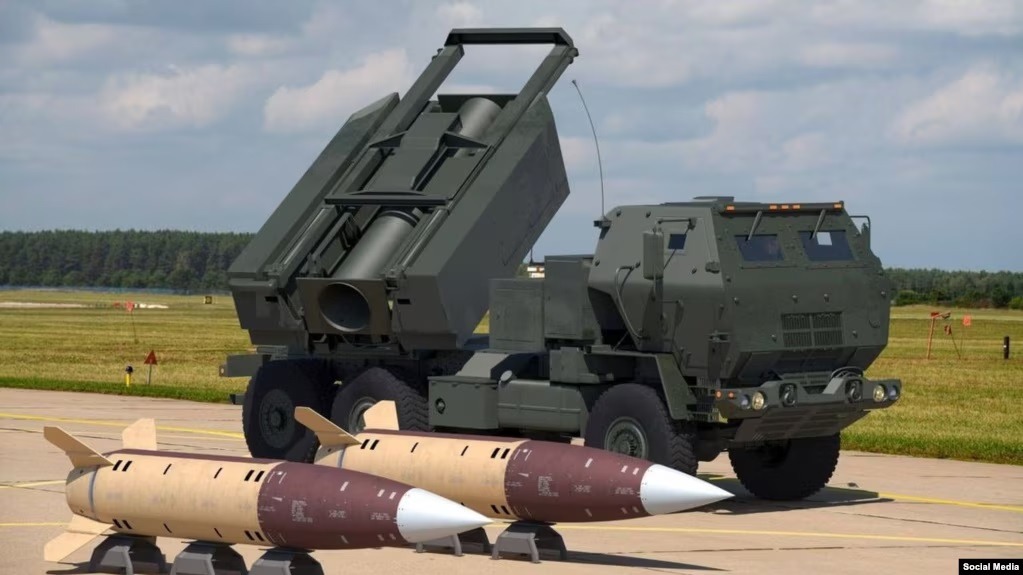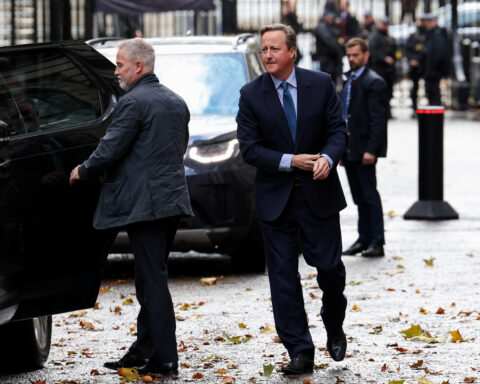The impending $60 billion aid package for Ukrainian in the United States is not coming a moment too soon. The situation on the front has been so dire for Ukrainian forces in recent weeks that CIA Director William Burns warned that Kyiv could lose the war against Russia by the end of the year if substantial aid was not forthcoming.
Over the past few months, as politicians in the U.S. Congress have wrangled over the aid allocation, Russian forces have been attacking at a handful of spots along the 1,000-kilometer front running through eastern and southern Ukraine, taking advantage of their opponent’s dwindling stockpiles of weapons and ammunition.
Deploying overwhelming barrages of artillery and guided bombs, Russian forces captured Avdiyivka in February, their first major victory since May 2023. Now they appear to be closing in on Chasiv Yar, an elevated town that could serve as a gateway to more important targets in the Kyiv-controlled parts of the Donbas region.
But on April 21, the U.S. House of Representatives, over the objections of some hard-line members of the Republican Party, passed the controversial aid bill. Its adoption by the Senate and signing by President Joe Biden in the coming days seems certain. Passage of the bill should lead to the quick resumption of ammunition and weapons shipments to Ukraine and will have Kyiv and its allies breathing a sigh of relief.
Not A Silver Bullet
The weapons supplies — which analysts say will likely include small arms, artillery shells, javelin anti-tank missiles, long-range rockets, shoulder-launched stingers, and other air-defense systems, among other items — will enable Ukraine to meet Russia’s expected summer offensive with robust firepower, potentially inflicting large-scale losses.
“The U.S. aid package will help Ukraine stabilize the front,” Mark Cancian, a military analyst at the Center for Strategic and International Studies, told RFE/RL on April 22. “Ukrainian forces will be able to, if not stop these Russian attacks, at least resist them much more strongly and conduct their own limited attacks.”
“Concerns about a Ukrainian collapse or Russian breakthrough will be eased,” he said.
Stabilizing the front will give Ukraine the opportunity to rebuild its forces for a possible large-scale offensive next year, Cancian said. Ukraine earlier this month passed a new mobilization bill to recruit more men for the front and relieve those who have been fighting for two years or more.
“I think the key thing now is training the forces and equipping them,” he said.

This summer, Russia is expected to launch a large-scale offensive targeting the Donetsk, Kharkiv, and Zaporizhzhia regions. Moscow has been stepping up the bombardment of Kharkiv — Ukraine’s second-largest city, located near the country’s northeastern border with Russia — ahead of the expected offensive.
“I am not sure we have enough resources to stop [the offensive],” Mykhaylo Zhirokhov, a Ukrainian military analyst, told RFE/RL. He worried that many Ukrainian soldiers are “worn down” and that it will take time for the U.S. military aid to reach the front.
Volodymyr Fesenko, a Ukrainian political expert, said passage of the bill in the House has boosted morale among the population and troops. However, he said, it is not a silver bullet.
“The most important thing is that U.S. military aid is resuming,” he told Current Time, the Russian-language network run by RFE/RL in cooperation with VOA, adding that it “will not be enough to turn the tide of the war.”
Ukraine, Fesenko said, needs a “technological advantage” if it is to drive Russian troops from its territory.
Long, Costly Delay
The Senate could pass the bill as early as April 23, after which it is expected to be quickly signed by Biden. The Pentagon could begin shipping military aid by the end of the week.
Some of the military aid will come from Pentagon stockpiles in Germany, meaning it could arrive at the Ukrainian border within days.
The $60 billion aid package includes $23 billion to replenish Pentagon stocks, $14 billion to purchase weapons specifically for Ukraine, as well as billions for military training and economic assistance.
The bill directs the president to send ATACMS — powerful, precision-guided ballistic missiles with a range of up to 300 kilometers — to Ukraine. But it does not specify how many.
ATACMS are important because they can be extremely disruptive, hitting command-and-control centers, depots, and other critical military targets deep behind Russian lines.
The Biden administration last autumn sent Ukraine a small batch of ATACMS on the condition they not be used for strikes inside Russia.
Kyiv announced in October it had used ATACMS to destroy nine Russian military helicopters, an ammunition depot, and an air-defense launcher in occupied Ukraine. Russia did not confirm the report, and the Ukrainian claims could not be independently verified.
Cancian said he does not expect Biden to lift the restriction on ATACM usage inside Russia. However, that is no longer a major constraint on Ukraine’s military since Kyiv is producing its own long-range drones and missiles in increasing quantities.
Ukraine could use the ATACMs to cut military supply routes to occupied Crimea, weakening Russian forces on the peninsula and in the occupied parts of the southern Ukrainian mainland, experts said. Moscow is building a new, overland rail link between Rostov-on-Don and Crimea after repeated Ukrainian strikes against the Crimea Bridge, the only physical link connecting Russia with the occupied peninsula.
The United States has allocated more than $44 billion in security assistance to Ukraine since Russia’s full-scale invasion in February 2022, making it Ukraine’s most important military backer. But Washington has sent almost nothing since the start of the year due to the congressional deadlock.
The failure to pass a new aid package for months has left Ukrainian troops short on ammunition and air defenses, resulting in battlefield setbacks and loss of life.
“Even with the U.S. restarting aid, the Ukrainians have been seriously damaged and their armed forces are weaker than they would have been otherwise. Don’t underestimate the importance of these losses during the celebration of the resumption of U.S. aid. The U.S. has made Ukraine bleed,” Phillips O’Brien, a professor of strategic studies at the University of St. Andrews, said in an April 21 report.
Nonetheless, he said the U.S. aid would allow Ukraine to return to a form of “active defense,” or holding the line while inflicting significant losses on the Russian armed forces.
Despite the lack of ammunition and air defense, Ukraine inflicted heavy losses on Russian forces in Avdiyivka. Russia reportedly lost 16,000 troops and 300 armored vehicles in the four-month battle for the city.

U.S. Election
The U.S. military aid should last through the end of the year, said Cancian. The passage of the Ukraine aid bill could prompt European countries to step up their contributions to Ukraine’s war effort, Musiyenko said.
European governments like Denmark, the Netherlands, Norway, and Belgium will begin delivering some of the 45 F-16 fighter jets they promised last year to Ukraine. The advanced U.S. jets could help Ukraine curtail Russian air attacks.
U.S. and European aid could help set up Ukraine for a counteroffensive in 2025 that might put it in a better position to negotiate with Russia to end the war.
However, much hangs on the November 2024 U.S. presidential election, experts say.
Presumed Republican nominee and former President Donald Trump has expressed reservations about aiding Ukraine, raising doubts he would allocate congressionally approved resources to the country or support a new Ukraine aid bill next year.
Max Bergmann, director of the Europe, Russia, and Eurasia Program at the Center for Strategic and International Studies, said that if Biden loses to Trump, he should distribute the full $60 billion to Ukraine before he leaves office.
He also said Europe should ramp up military production in case U.S. aid to Ukraine is ended under Trump.
“Europe’s goal should be to put itself in a position to potentially fill a future gap left by the United States should it not pass another supplemental,” he added.
Fesenko, the Ukrainian political analyst, said the U.S. election is causing apprehension across Ukraine and Europe.
“Nobody knows what Trump’s policies will be,” he said. “There could be vacillation, hesitation. Of course, it’s alarming.”





